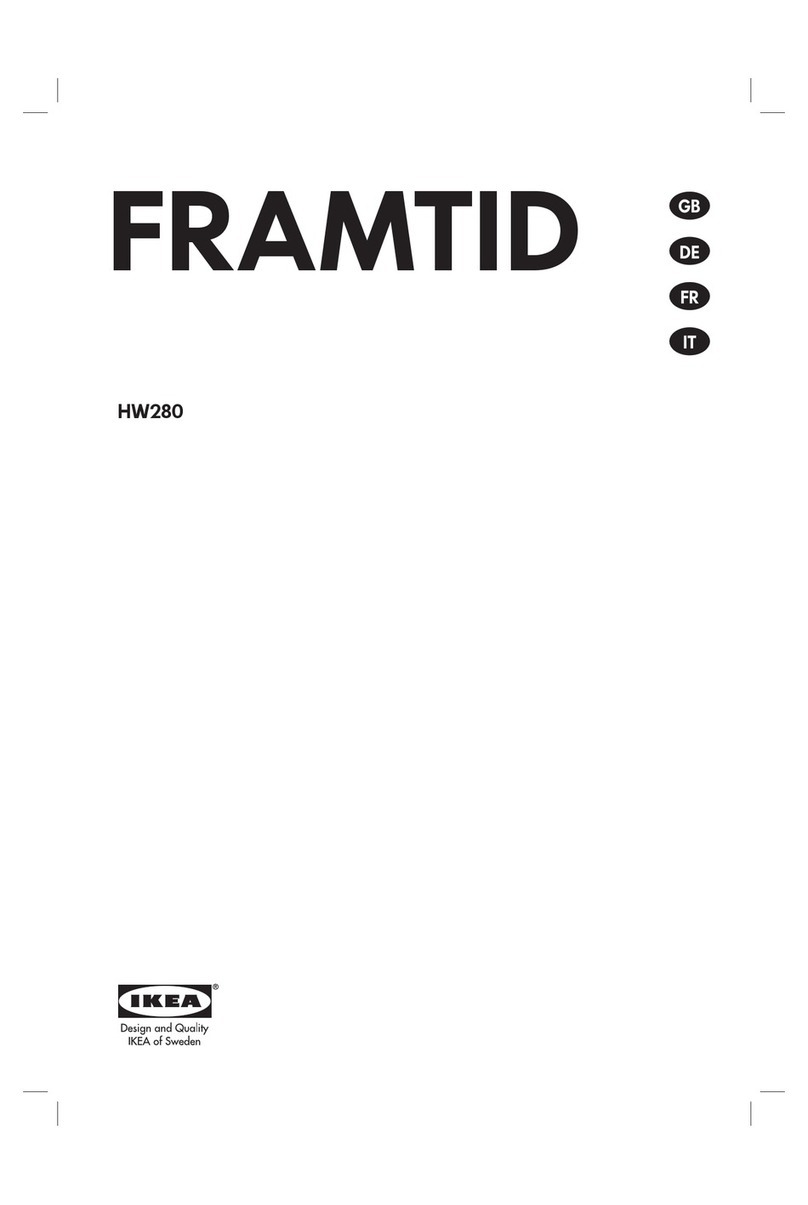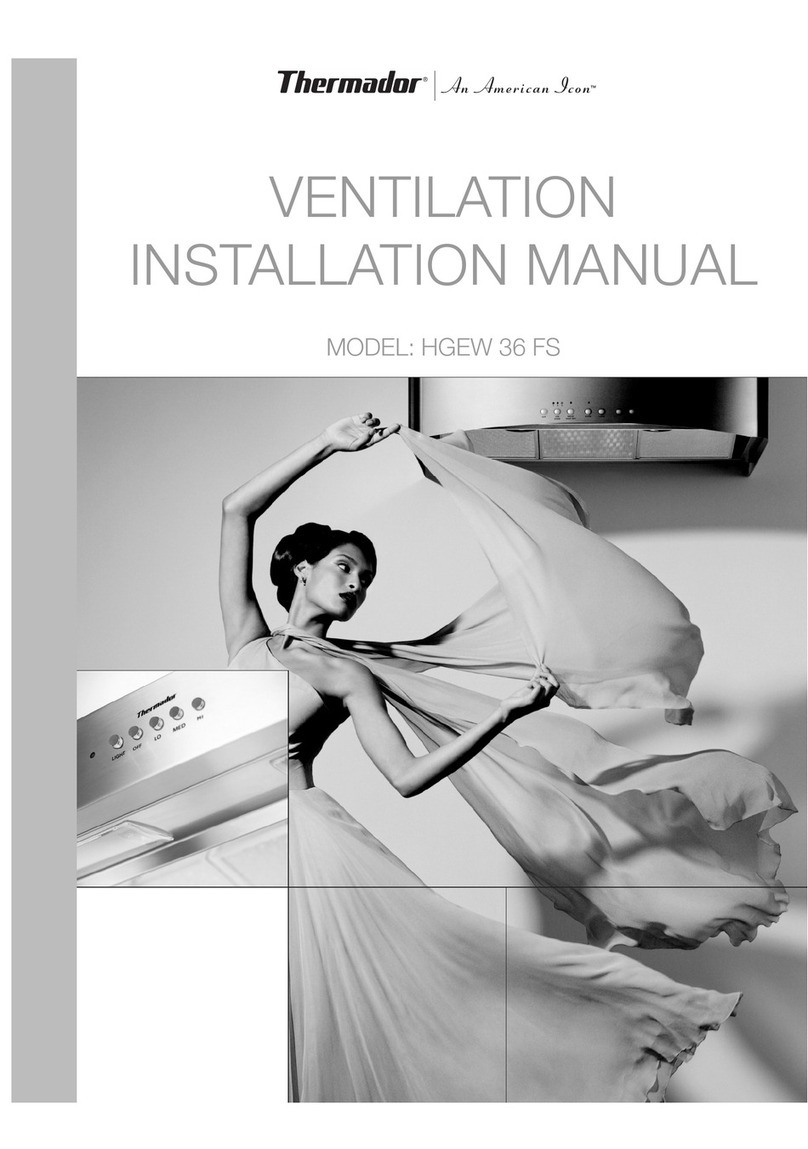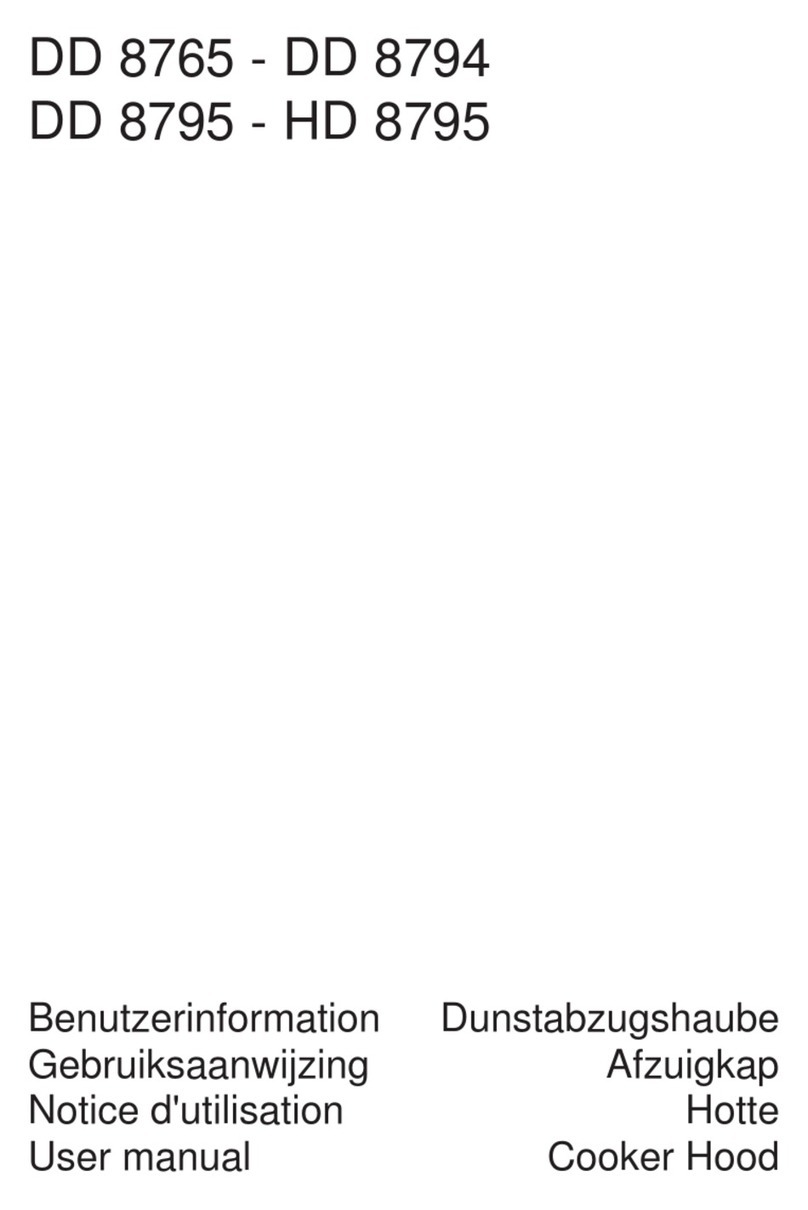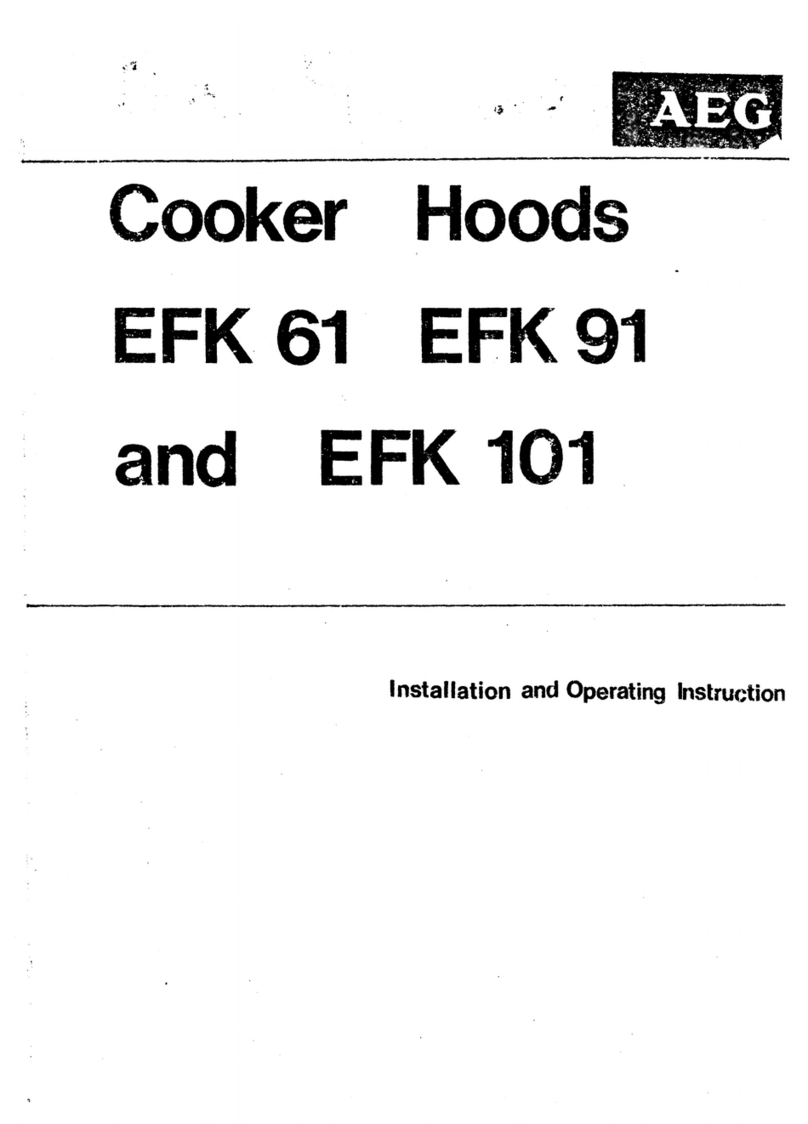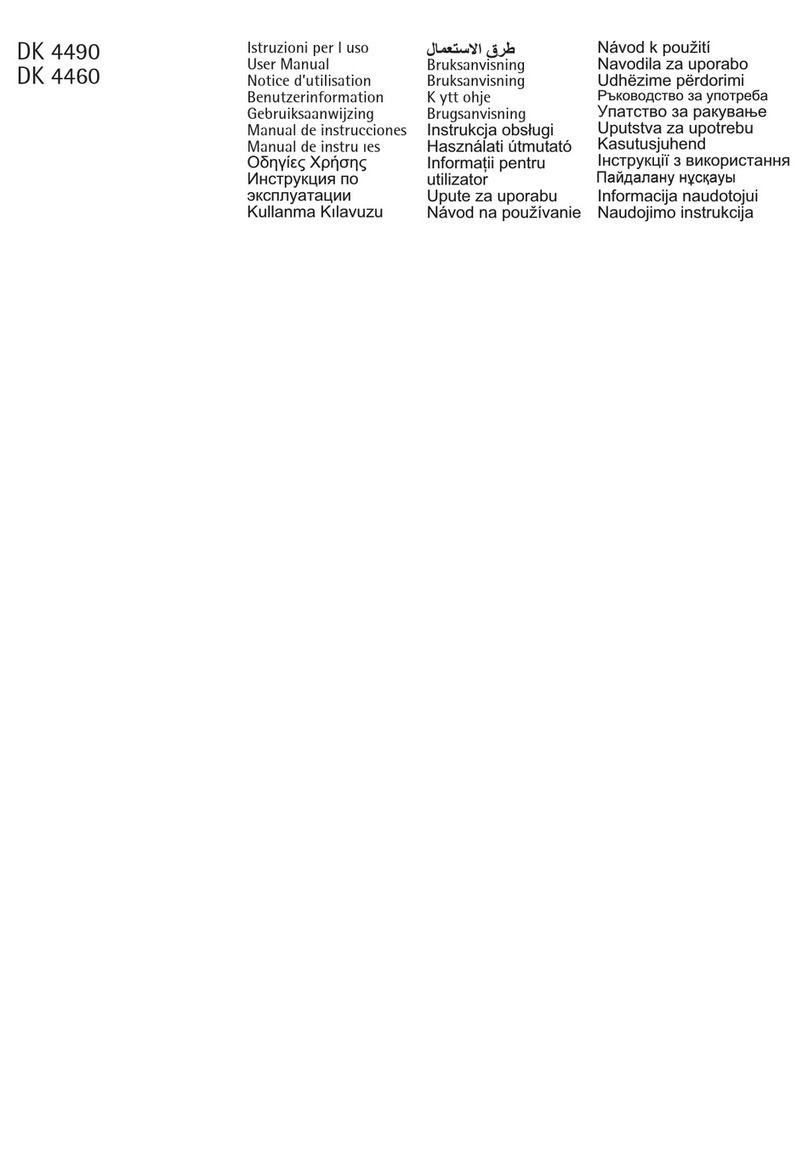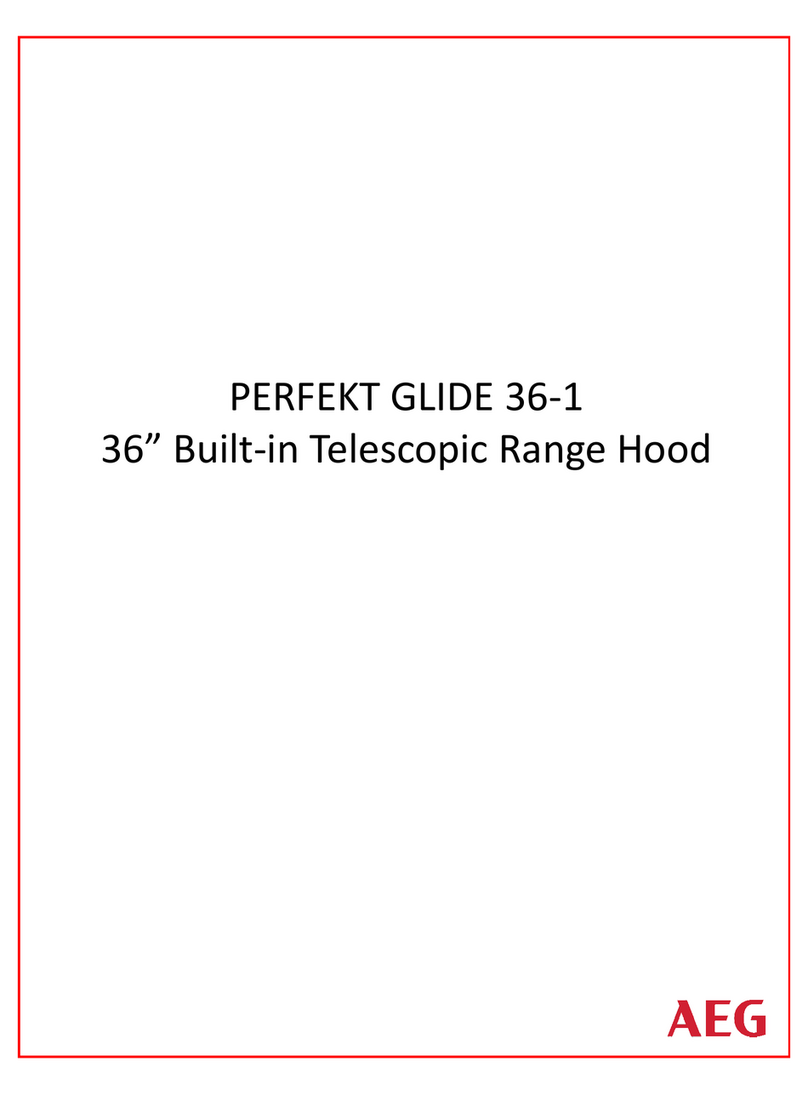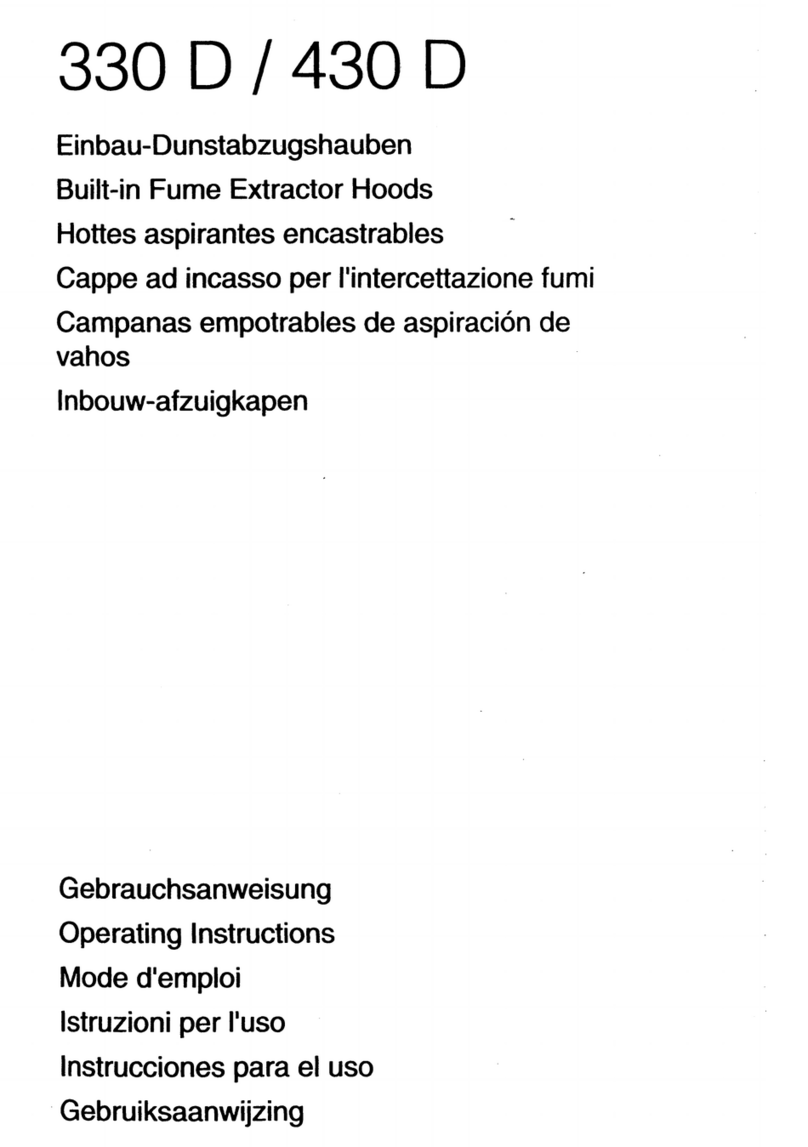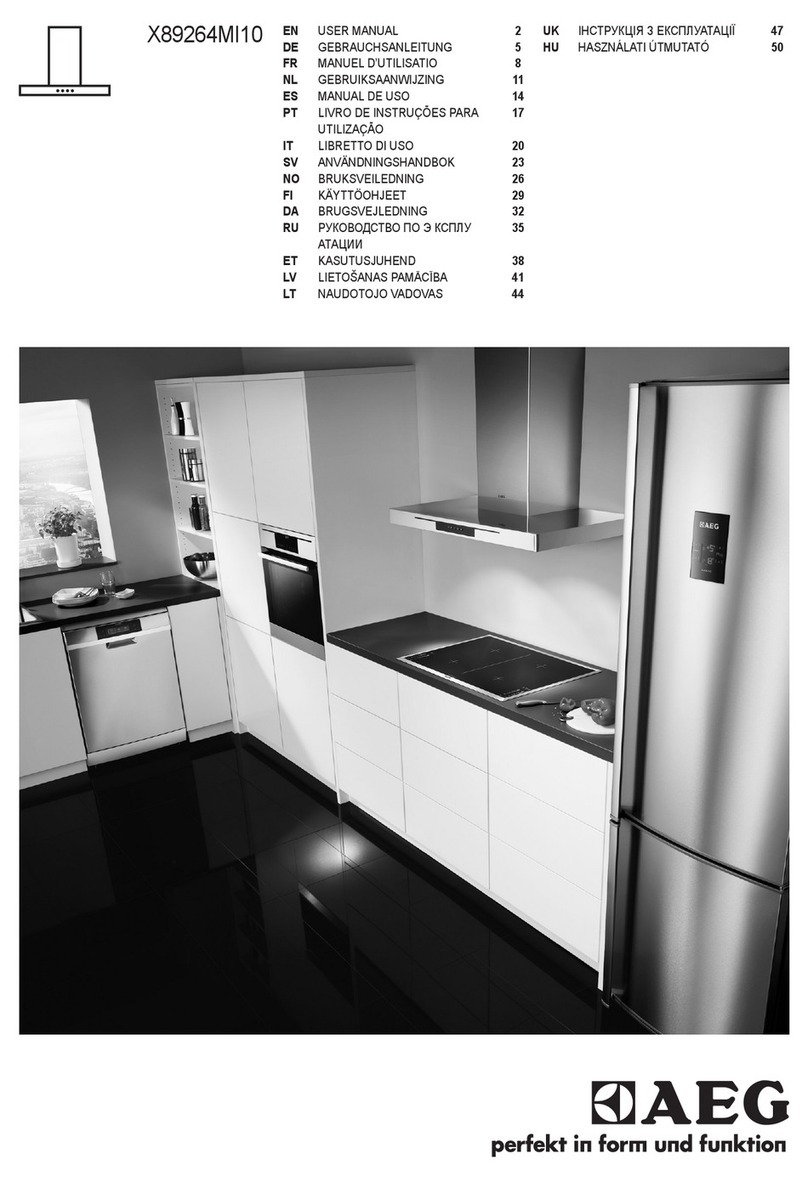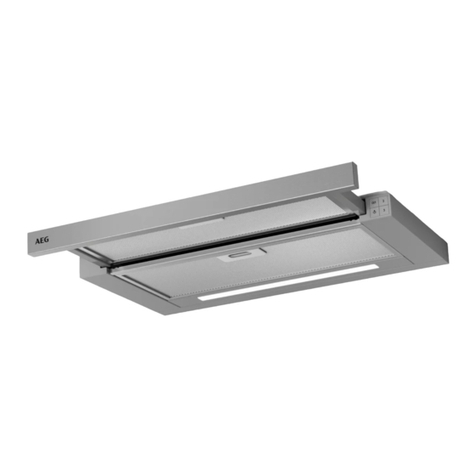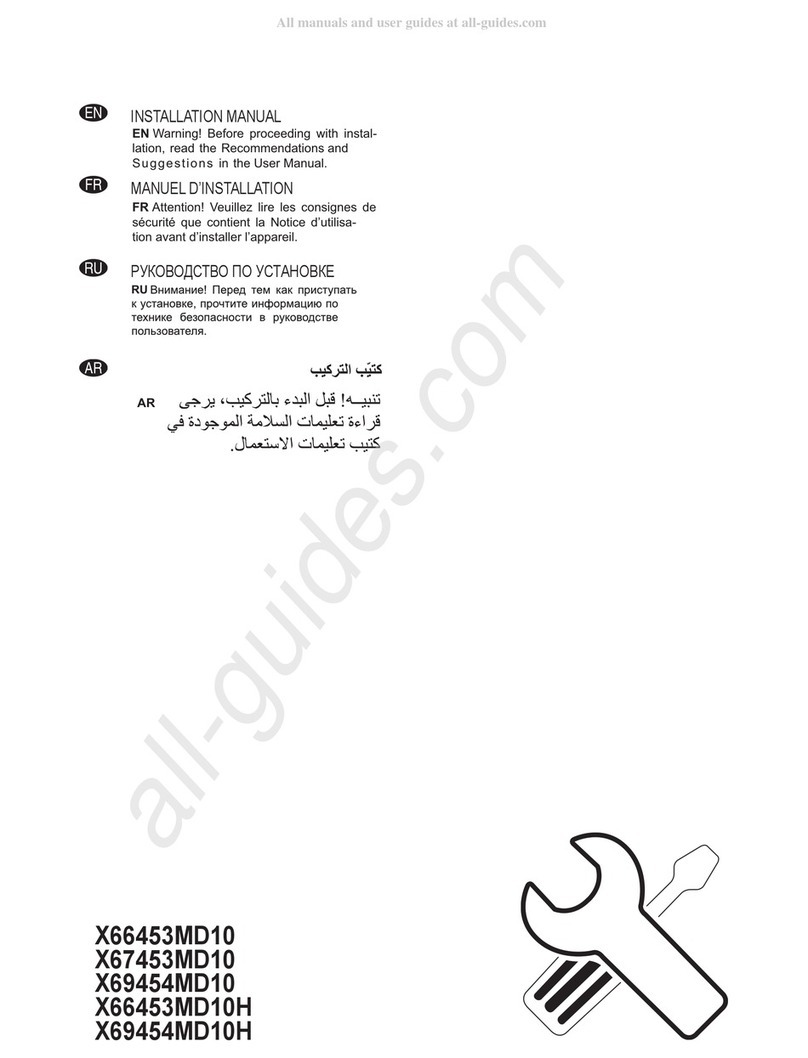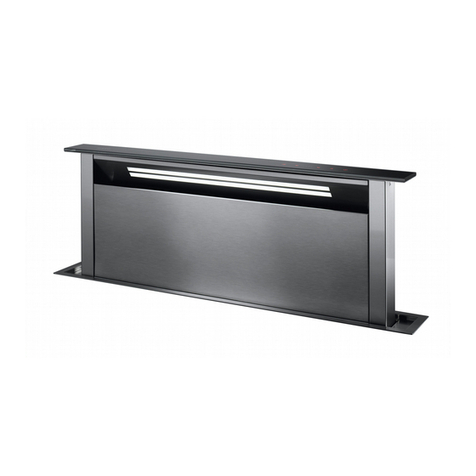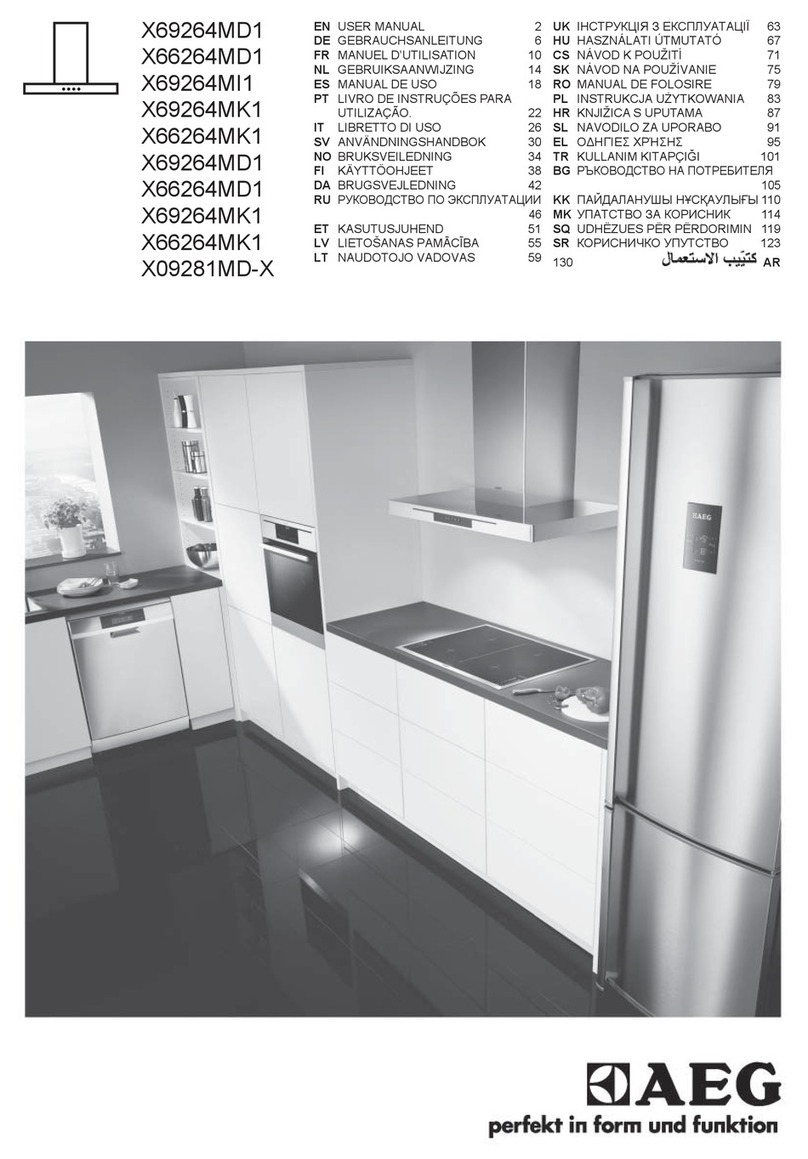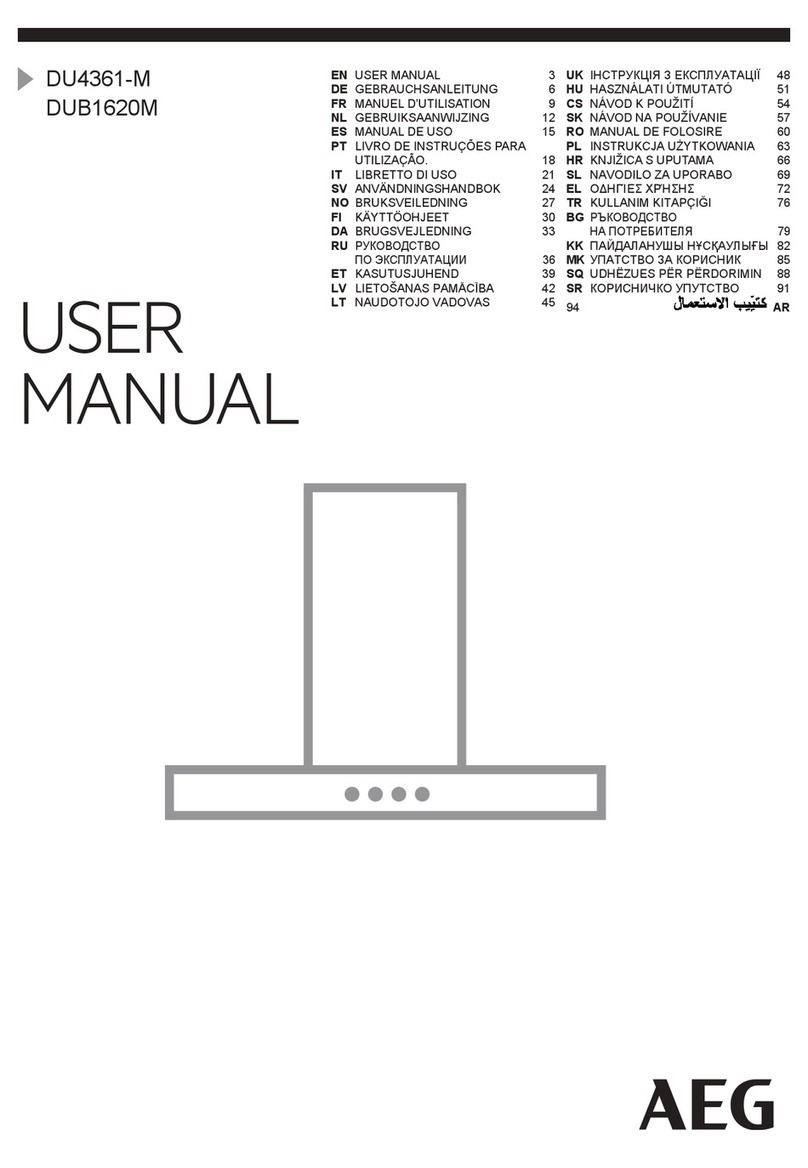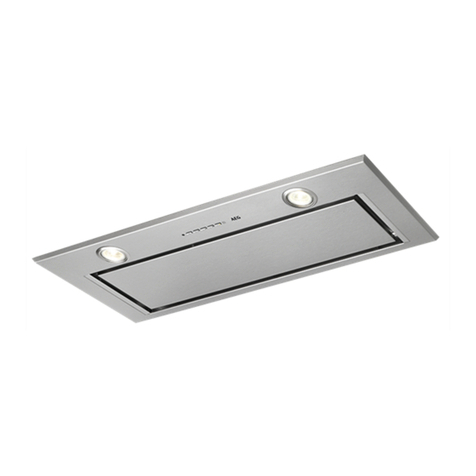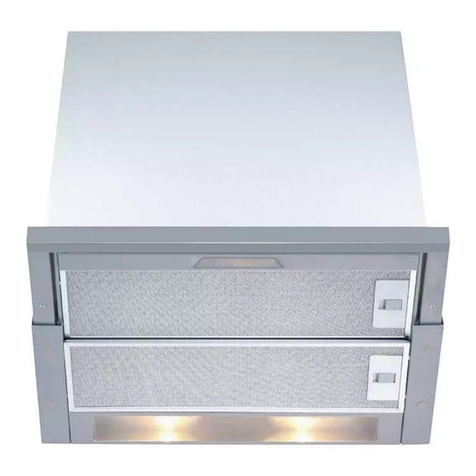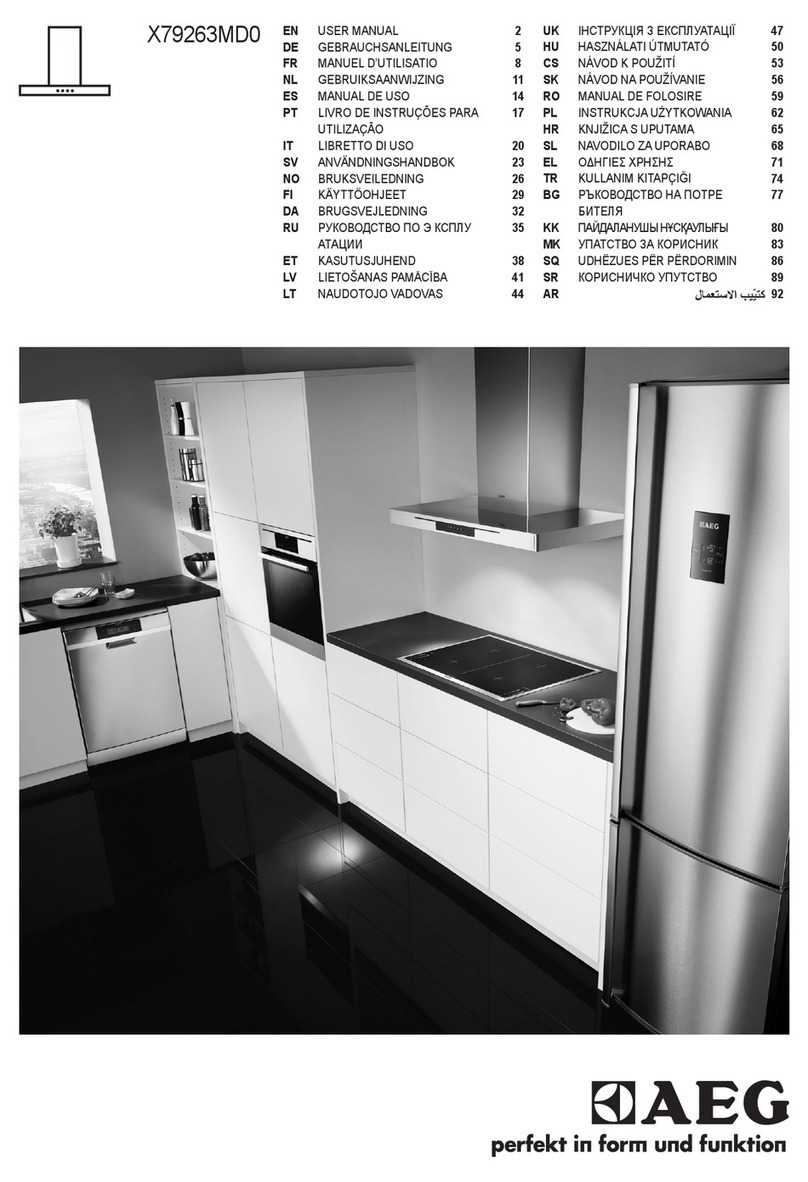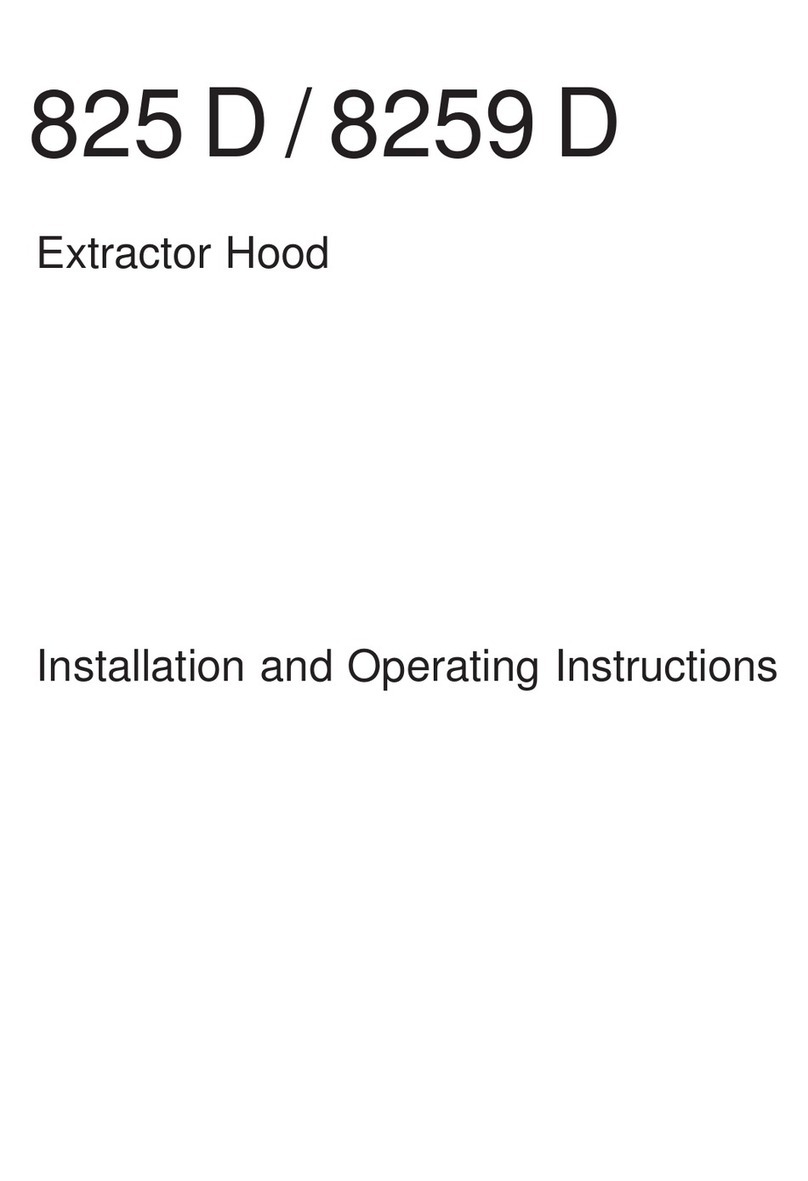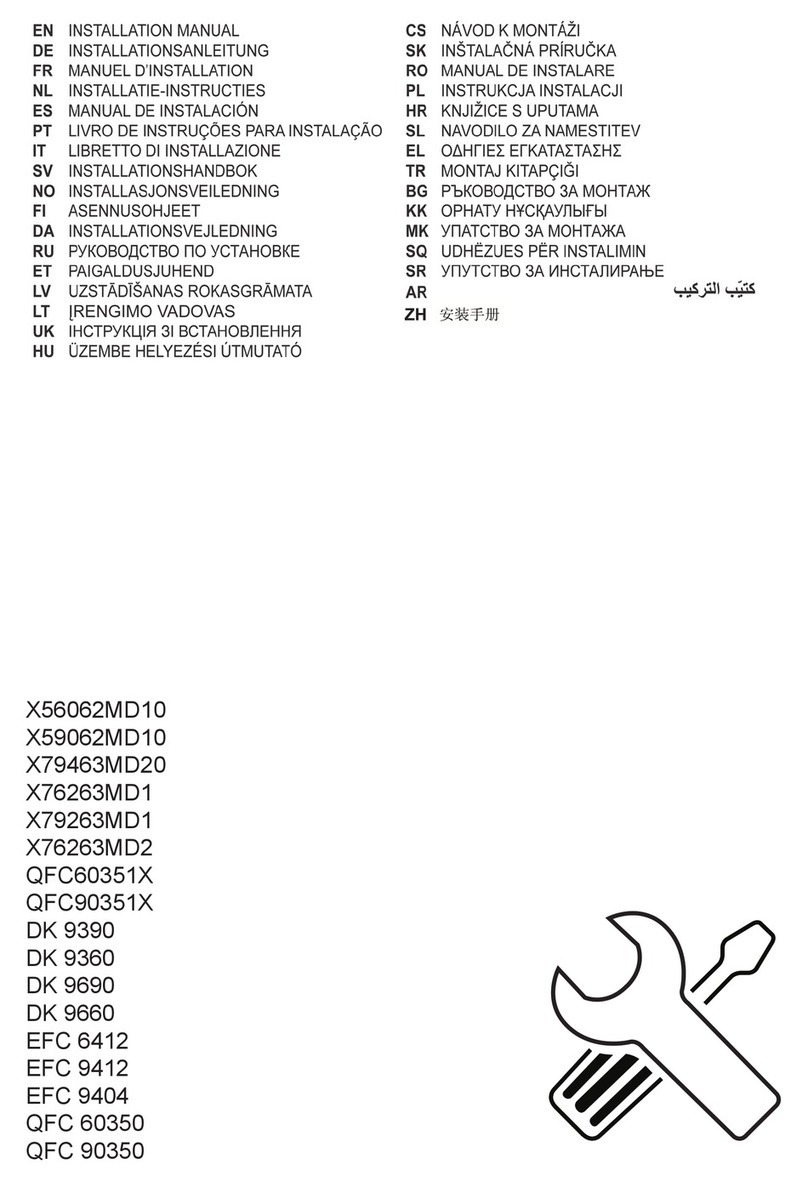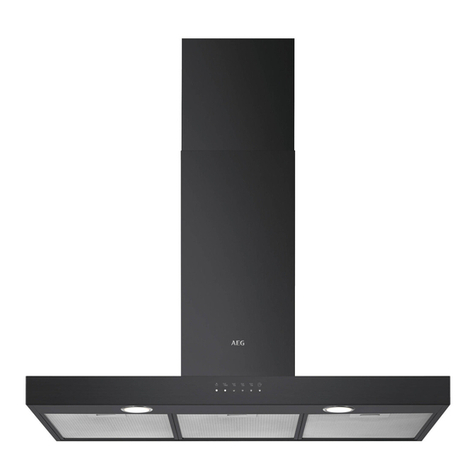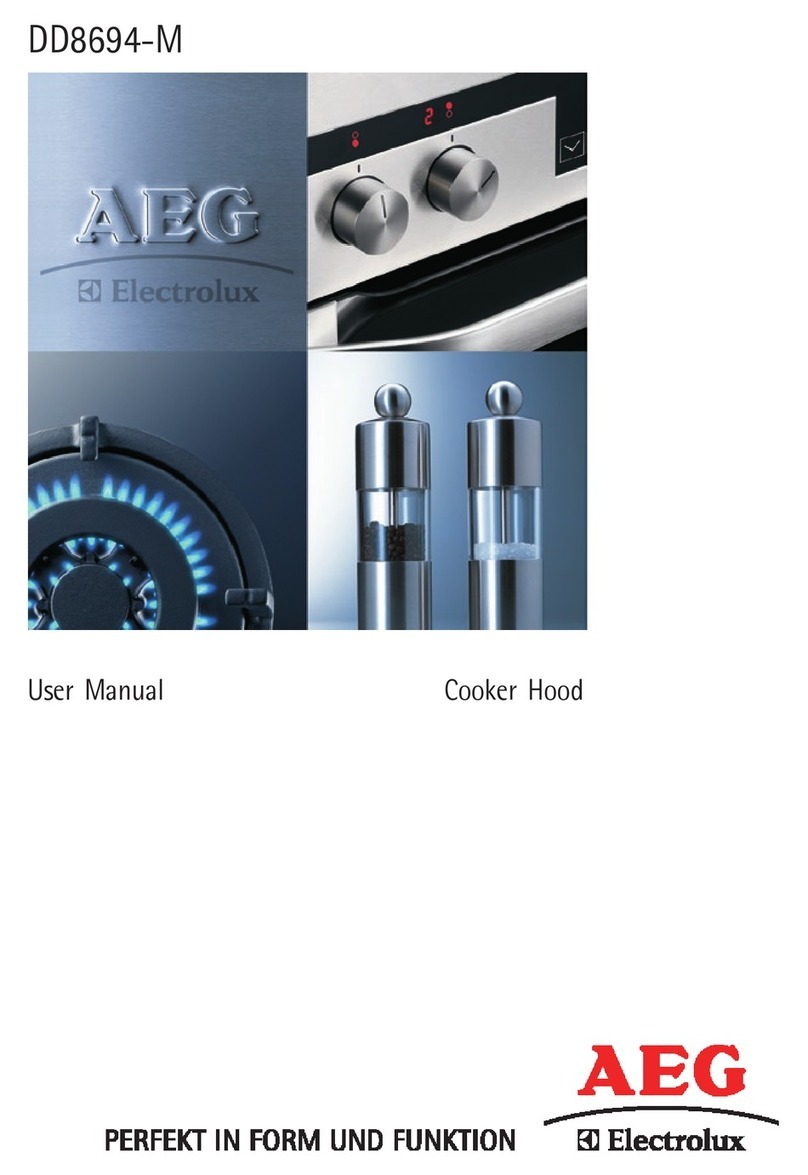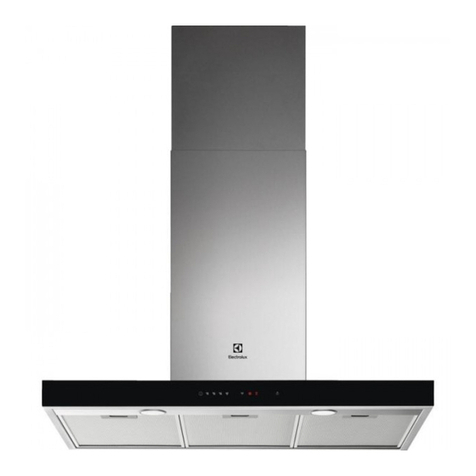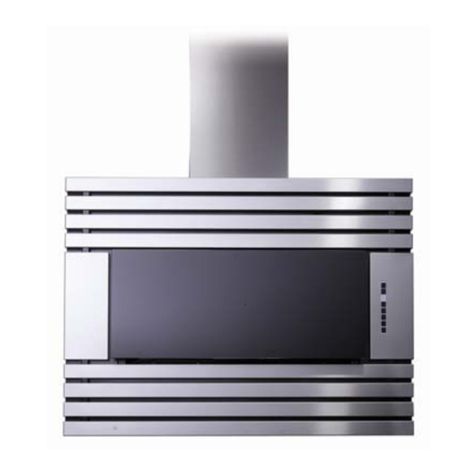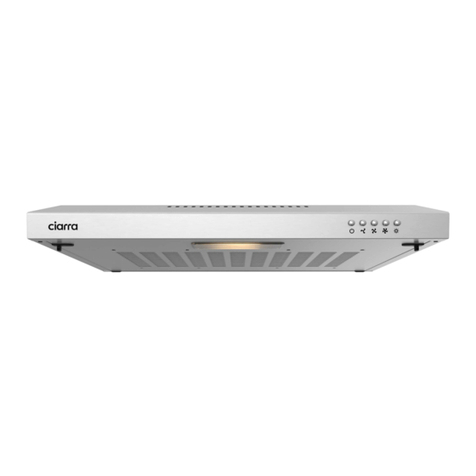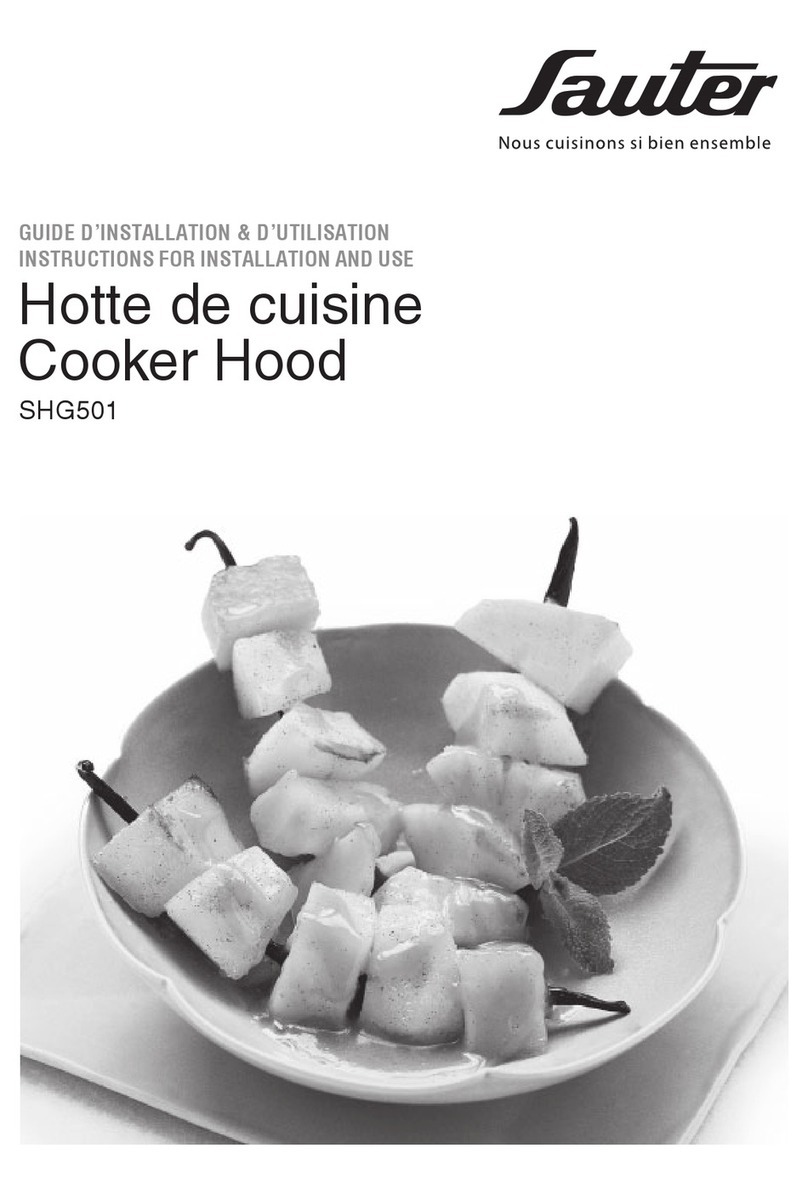61
The national Standard on fuel-burning systems specifies a maximum
depression of 0.04 bar in such rooms.
The air outlet must not be connected to chimney flues or combustion
gas ducts. The air outlet must under no circumstances be connected
to entilation ducts for rooms in which fuel-burning appliances are
installed.
The air outlet installation must comply with the regulations laid down
by the rele ant authorities.
When the unit is used in its extractor ersion, a sufficiently large
entilation hole must be pro ided, with dimensions that are
approximately the same as the outlet hole.
National and regional building regulations impose a number of
restrictions on using hoods and fuel-burning appliances connected to
a chimney, such as coal or oil room-heaters and gas fires, in the
same room.
Hoods can only be used safely with appliances connected to a
chimney if the room and/or flat (air/en ironment combination) is
entilated from outside using a suitable entilation hole approximately
500-600 cm2 large to a oid the possibility of a depression being
created during operation of the hood.
If you ha e any doubts, contact the rele ant controlling authority or
building inspectors office.
Since the rule for rooms with fuel burning appliances is outlet hole of
the same size as the entilation hole, a hole of 500-600 cm2, which
is to say a larger hole, could reduce the performance of the extractor
hood.
If the hood is used in its recirculation function, it will operate simply
and safely in the abo e conditions without the need for any of the
aforementioned measures.
When the hood is used in its extractor function, the following rules
must be followed to obtain optimal operation:
short and straight outlet hose
keep bends in outlet hose to a minimum
ne er install the hoses with an acute angle, they must always follow
a gentle cur e.
keep the hose as large as possible (preferably the same diameter
as the outlet hole).
Failure to obser e these basic instructions will drastically reduce the
performance and increase the noise le els of the extractor hood.




